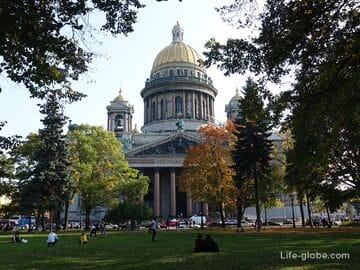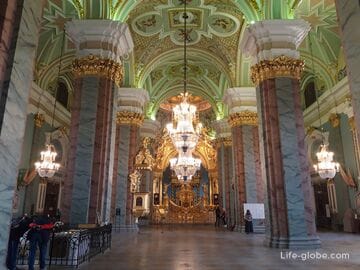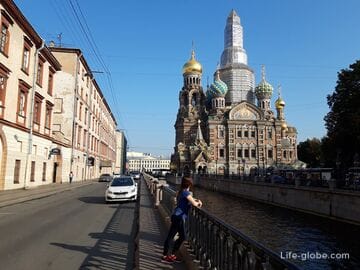Kazan Cathedral is one of the largest churches and a landmark of St. Petersburg.
Kazan Cathedral is a cathedral.
Full official name: Cathedral of the Kazan Icon of the Mother of God.
Kazan Cathedral is located in the center of St. Petersburg and adorns Nevsky Prospekt-one of the most visited streets of the city, being the dominant avenue.
The cathedral is located at the intersection of Nevsky Prospekt and Griboyedov Canal.
The main facade with a colonnade, two standing monuments and a sprawling square of the same name with a fountain, the cathedral faces Nevsky Prospekt.
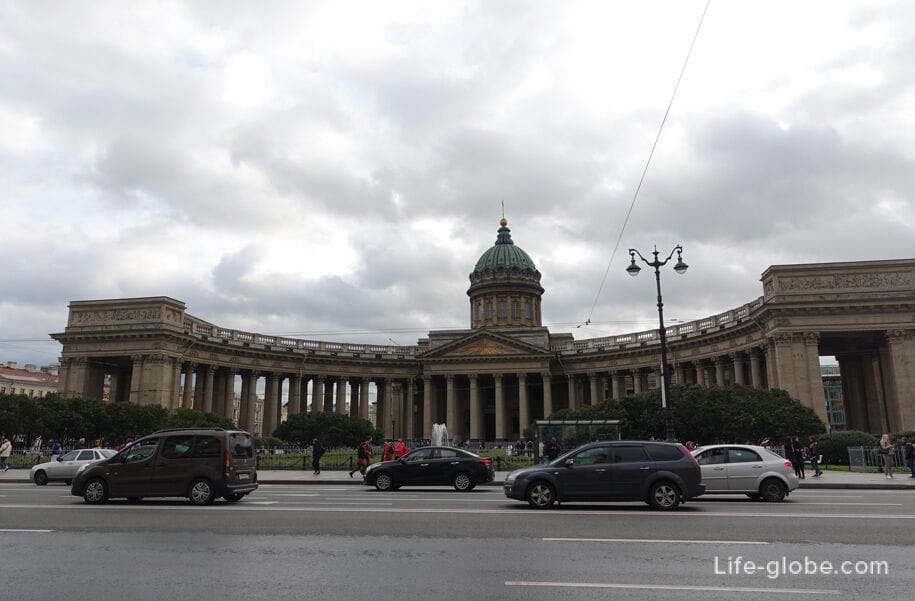
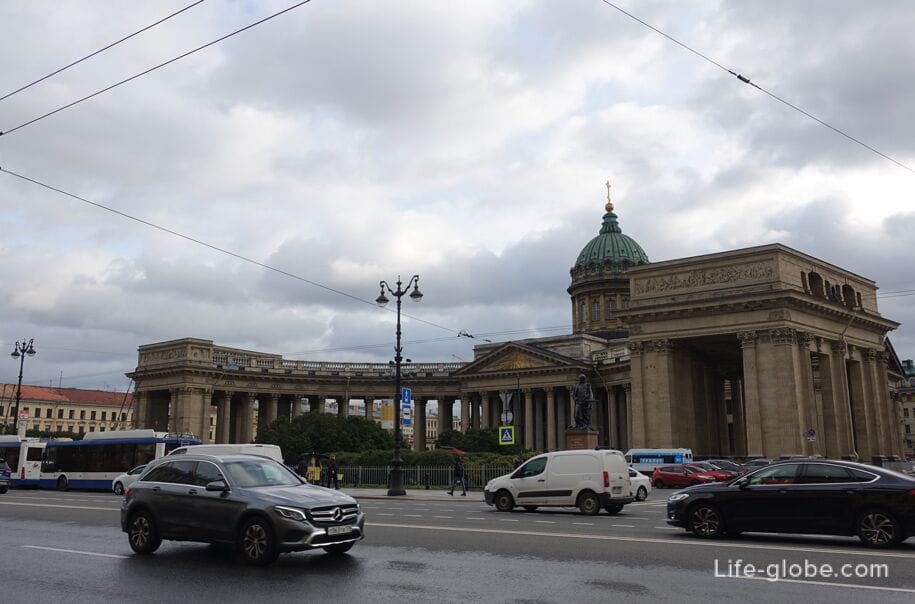
Kazan Cathedral was built according to the idea of Emperor Paul I, on the site where there was a modest church of the Nativity of the Virgin, which housed one of the main St. Petersburg shrines-the miraculous icon of the Kazan Mother of God.
The laying of the temple took place on August 27 (September 8, new style), 1801, in the presence of Emperor Alexander I-the son of Paul I. The construction of the cathedral was carried out in 1811 according to the project of the architect Andrey Nikiforovich Voronikhin as the cathedral of the city for the storage of the icon of the Mother of God of Kazan.
Russian Russian military glory After the Patriotic War of 1812, the cathedral was perceived as a monument to the military victories of the Russian people in the war and acquired the significance of a monument to Russian military glory.
In 1813, the commander Mikhail Illarionovich Kutuzov was buried in the cathedral and the keys to the captured cities and other military trophies were placed, which are kept in the cathedral to this day. Later, for some time, the current cathedral co-existed with the museum's exposition.
The external outlines of the Kazan Cathedral in St. Petersburg resemble the Cathedral of St. Peter in Rome. This design of the cathedral was made at the request of Paul I. Thus, imitating the peculiarities of Roman architecture, Voronikhin became one of the founders of the Russian Empire style - the style of Russian classicism.
Today, the Kazan Cathedral is an outstanding monument of Russian history, architecture and fine arts.
In the plan, the cathedral is made in the form of a four-pointed Latin cross, stretched from west to east. The center of the cathedral is crowned by a large and slender dome with a cross rising 71.6 meters above ground level.
The main (northern) facade of the cathedral opens to Nevsky Prospekt with a grandiose external colonnade.
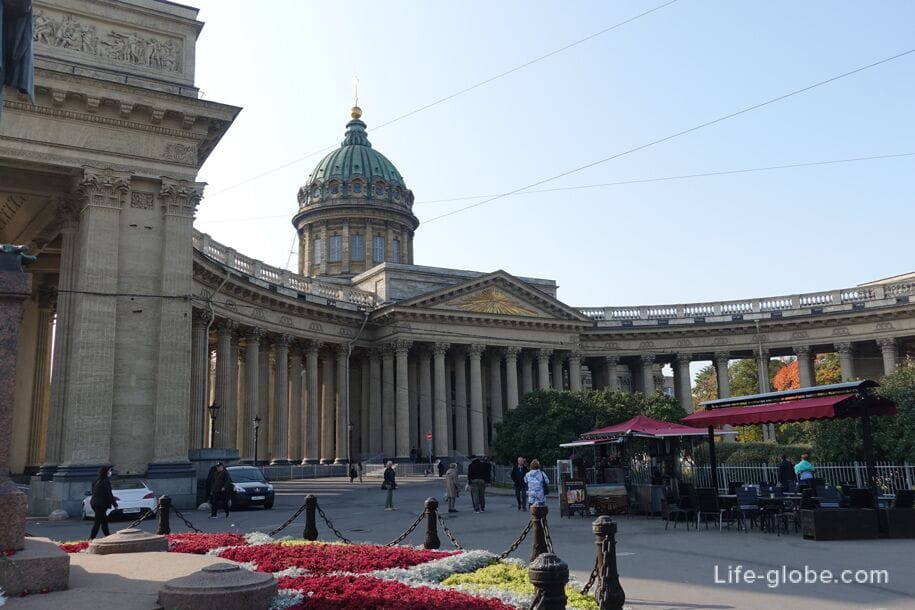

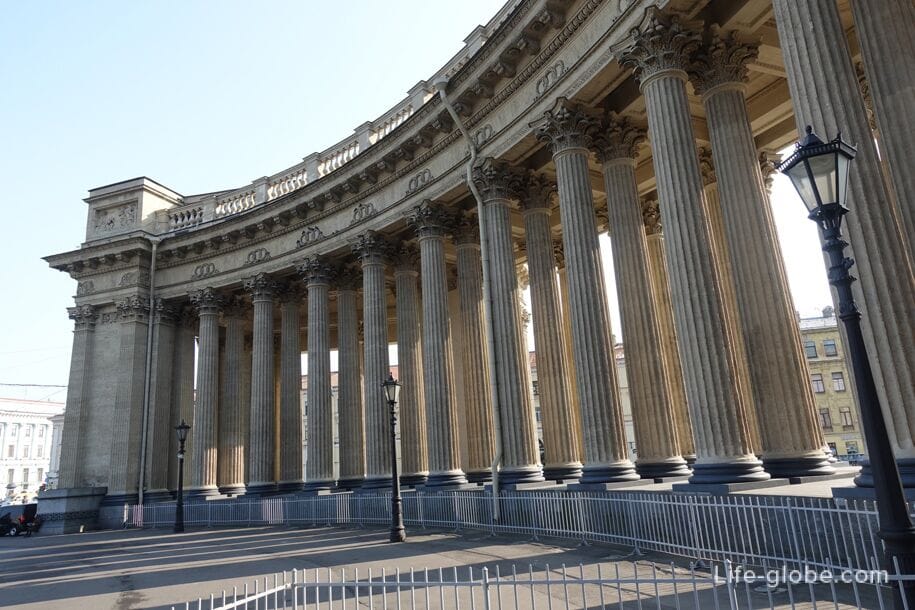
The ends of the colonnade form something like triumphal arches, which are crowned by an attic with relief sculptural compositions.
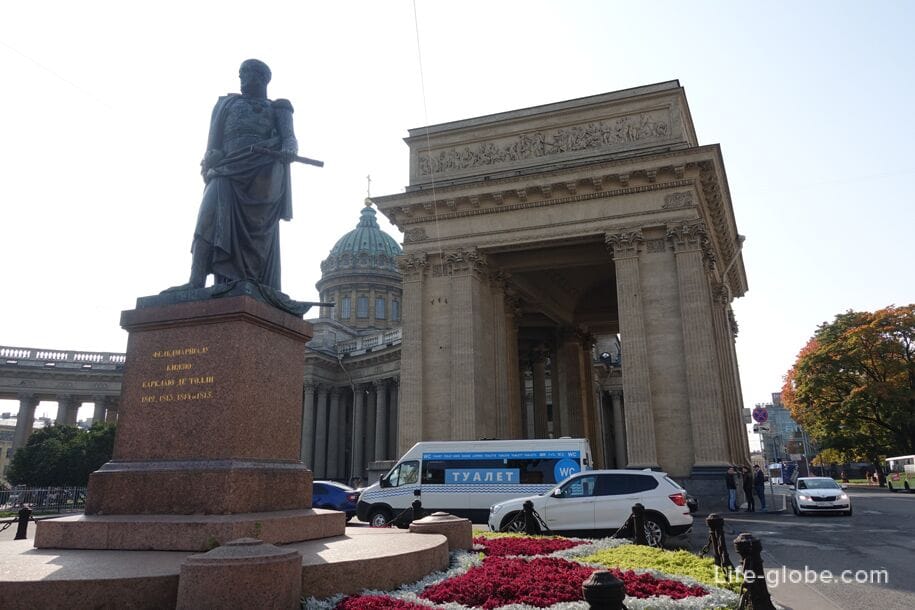
The main portal (entrance/exit) of the cathedral, as well as the two side ones, has a portico with a pediment.
The total number of columns forming the colonnade and portico of the cathedral is 136.

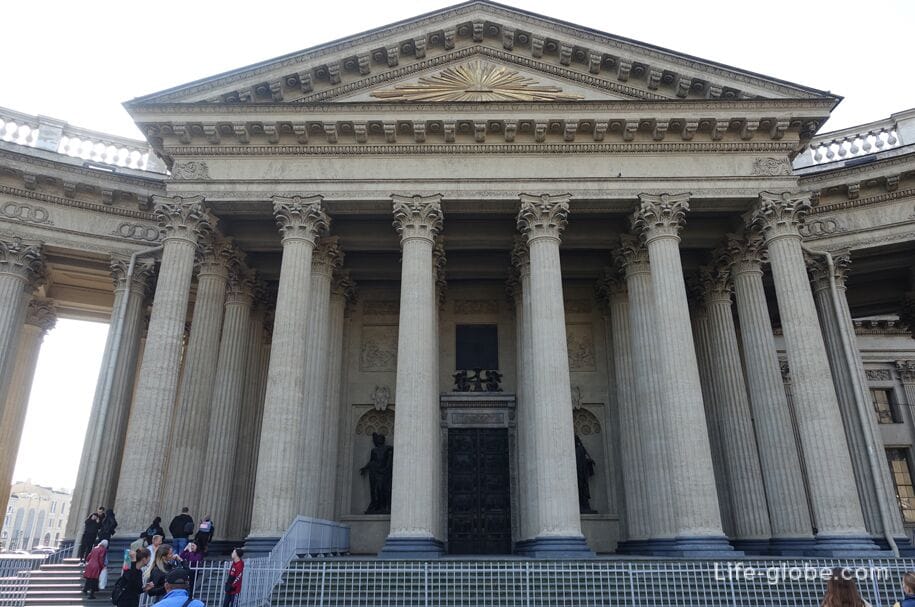
Outside, the cathedral is decorated with bronze sculptures of saints made by the best Russian sculptors: Pimenov, Martos and Demut-Malinovsky. The sculptures represent Saints Vladimir, Andrew the First-Called, John the Baptist and Alexander Nevsky.
The sculptures, as well as the northern doors of the cathedral, were cast by master Ekimov. The north doors are an exact replica of the doors made in the 15th century by the sculptor Lorenzo Ghiberti for the baptismal house in Florence.
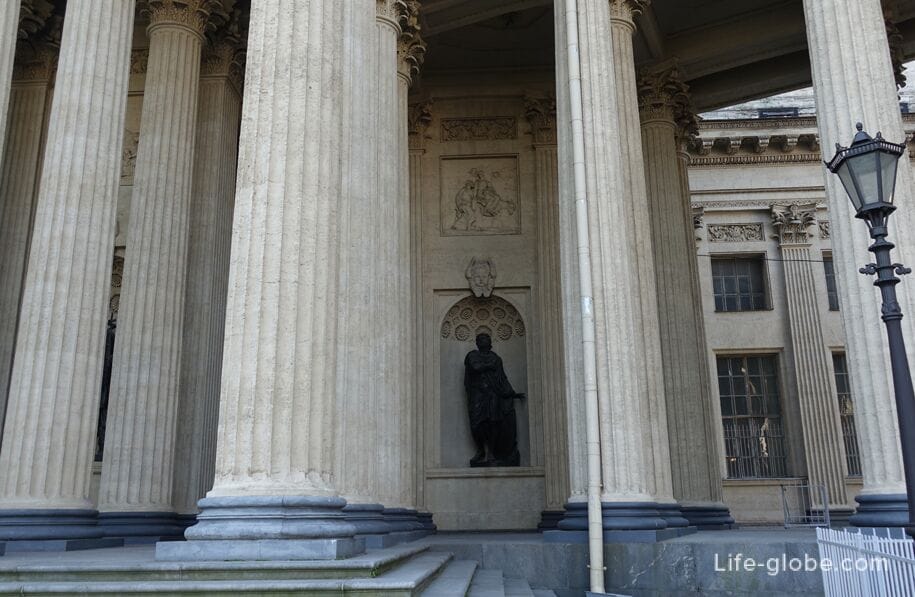
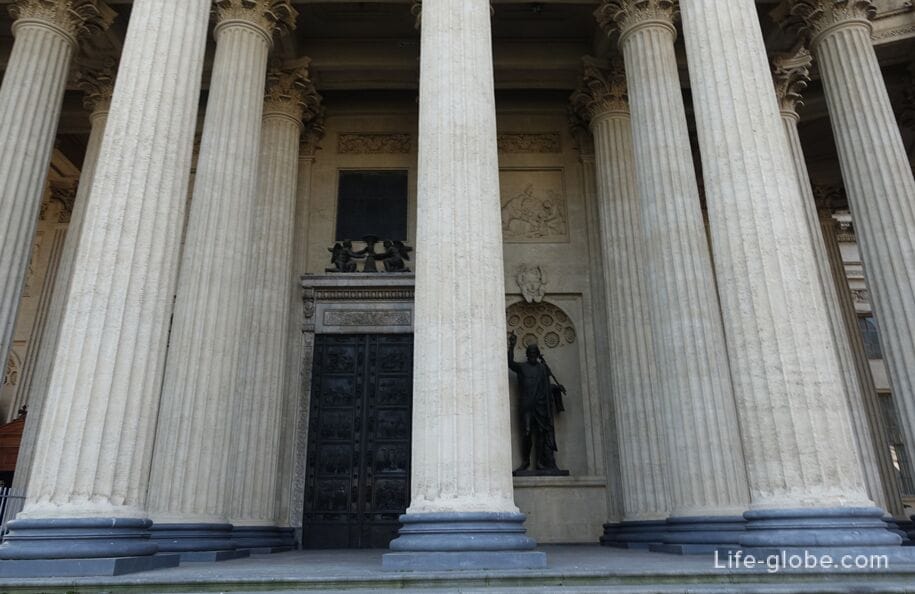

Interior of the Kazan Cathedral
Inside, the cathedral has the form of a Roman basilica, divided by rows of granite monolithic columns with capitals, the Corinthian order into three naves (corridors).
The central nave is four times wider than the side nave and is covered by a semi-cylindrical vault. The side aisles are covered with rectangular caissons.
The floor of the cathedral is mosaic. It is lined with gray and pink Karelian marble.
The floors and steps of the altar and pulpit, the base of the royal seat and the pulpit are lined with crimson Shokshin quartzite (porphyry).
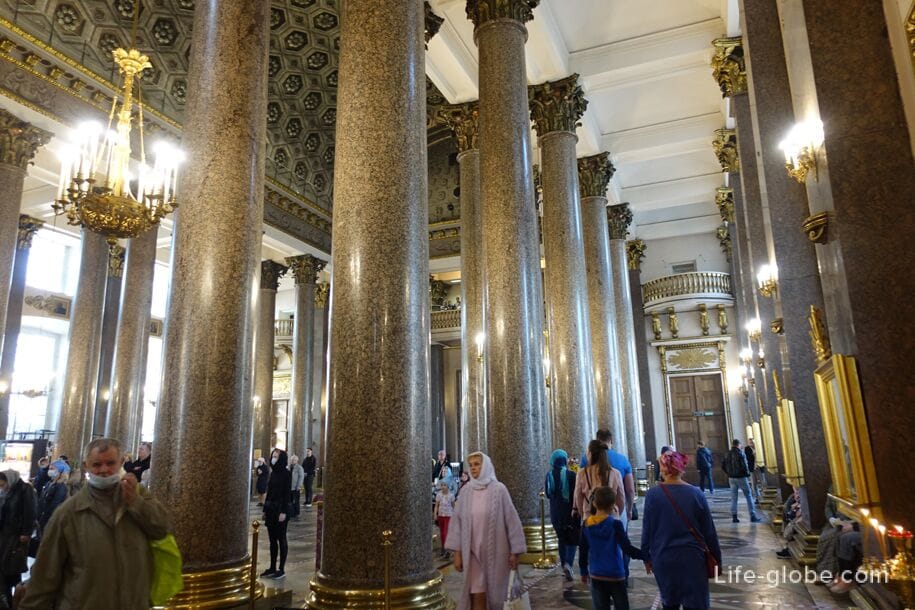
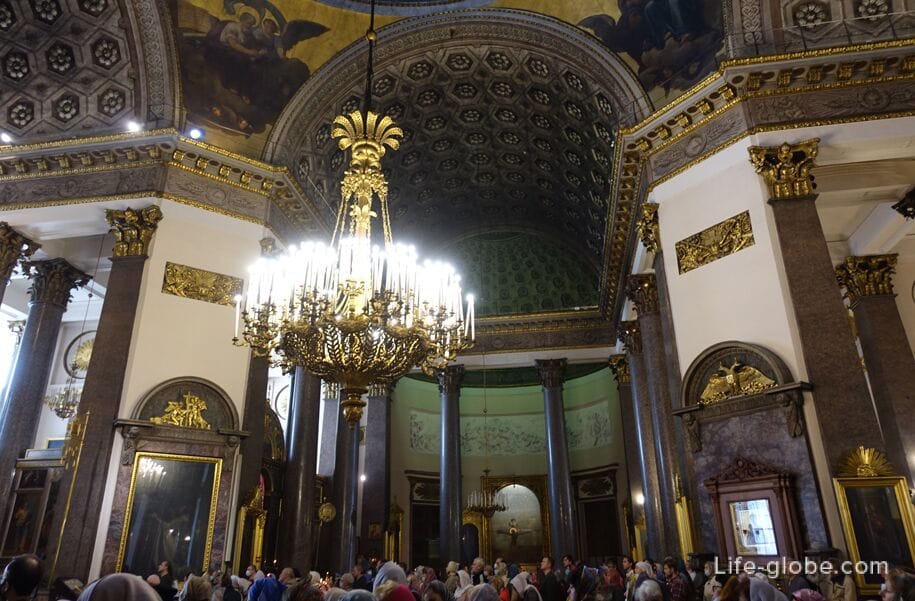
Painting is an integral part of the interior of the St. Petersburg Kazan Cathedral.
The iconostasis of the cathedral was painted by the best artists of the late 18th and early 20th centuries. K. Bryullov, Bruni, Basin, Shebuyev, Borovikovsky, Ugryumov, Bessonov and others painted the iconostasis of the cathedral, its walls and dome pillars - pylons.
The most remarkable painting work in the cathedral is the altarpiece "The Taking of the Virgin to Heaven" by K. P. Bryullov.
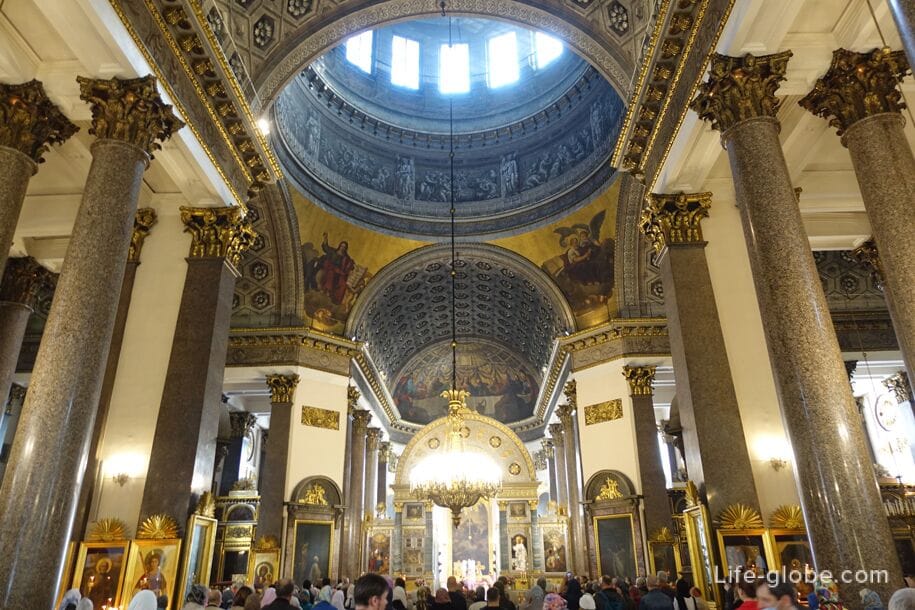
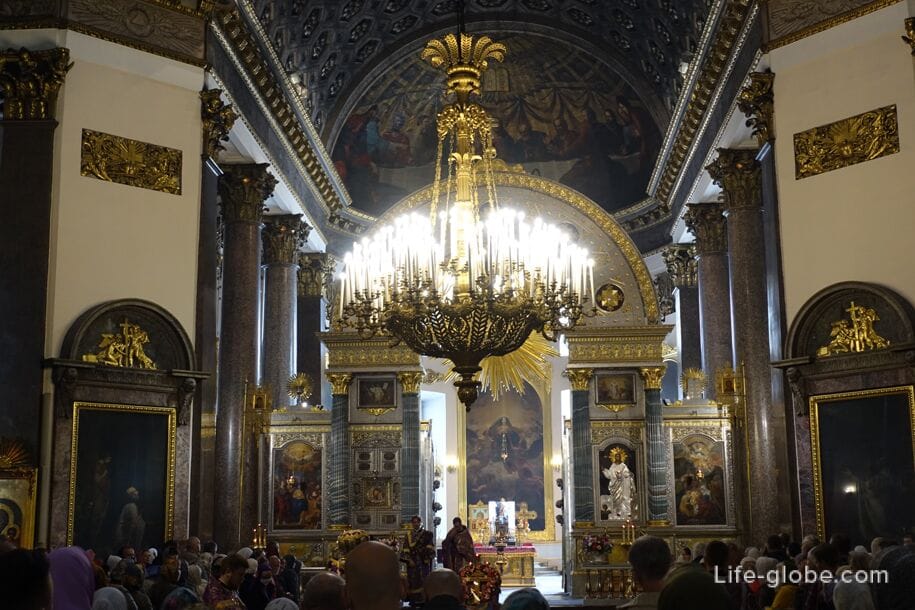
The main shrine of the cathedral is the venerated image of the Kazan Icon of the Mother of God, a list (copy) of the miraculous icon found in Kazan.Kazan in 1579. Although the icon in the St. Petersburg cathedral is a copy, it, like the original icon itself, is recognized as miraculous.
The Kazan icon, which belonged to Tsaritsa Paraskovia Feodorovna, a relative of Peter, was brought to St. Petersburg under Peter I. According to research, it was built from the original Kazan prototype. After a long stay in the Church of the Nativity of the Virgin on Nevsky Prospekt, the icon was placed in the new Kazan Cathedral, which was erected for her. The Kazan Icon has become one of the main Orthodox shrines of St. Petersburg.
After the closure of the Kazan Cathedral in 1932, the icon was saved - it was moved to the Prince Vladimir Cathedral on the Petrograd side in St. Petersburg. In August 2002, the icon of the Kazan Mother of God was returned to the cathedral and installed on the right side of the Tsar's Gate of the recreated iconostasis.

Inside, as well as outside, the Kazan Cathedral is richly decorated with sculptures.
Relief sculptural works both inside and outside are created by sculptors Gordeev, Rashett, Prokofiev and others.
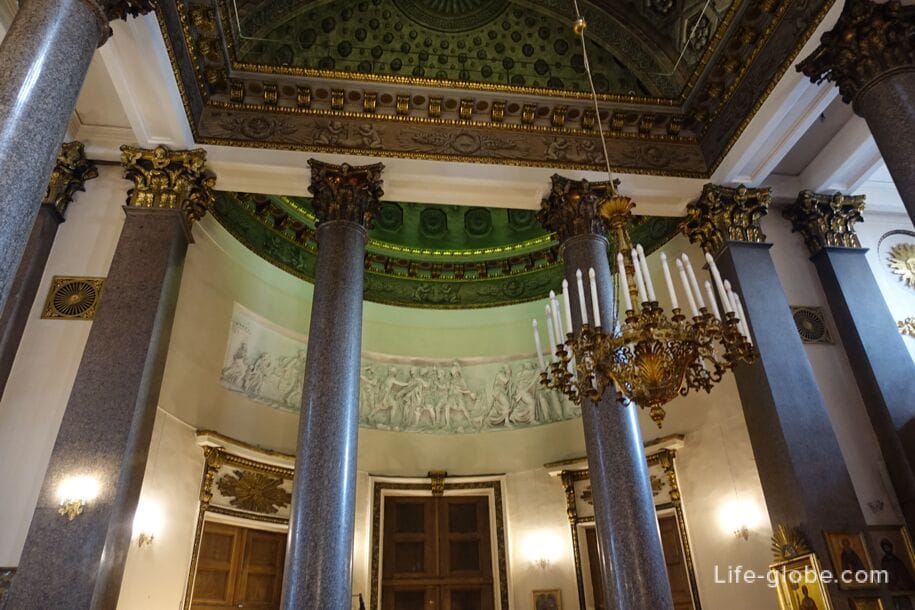
The ceiling of the cathedral is decorated with rosettes imitating painting in the form of a stylized flower made of French alabaster.
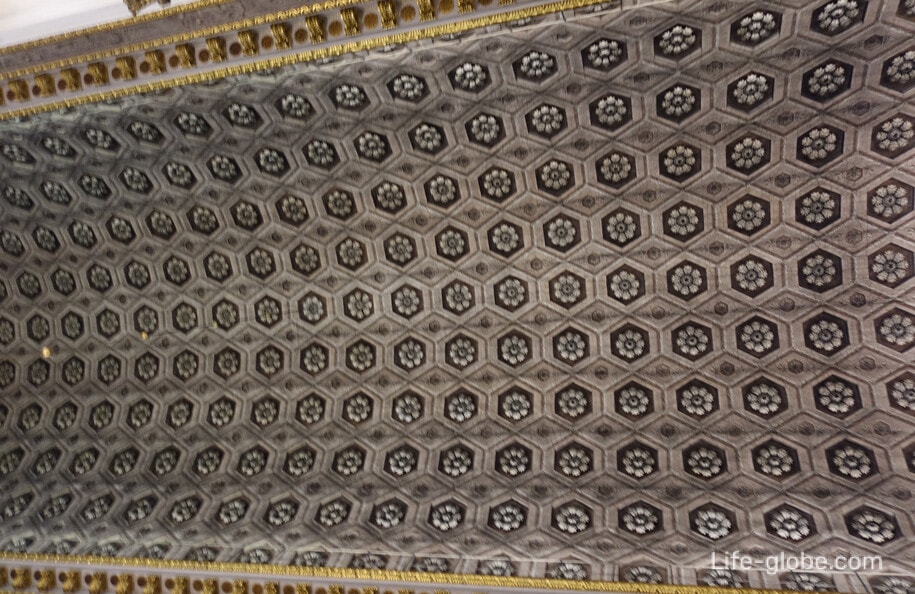
Cathedral dome, inside view.
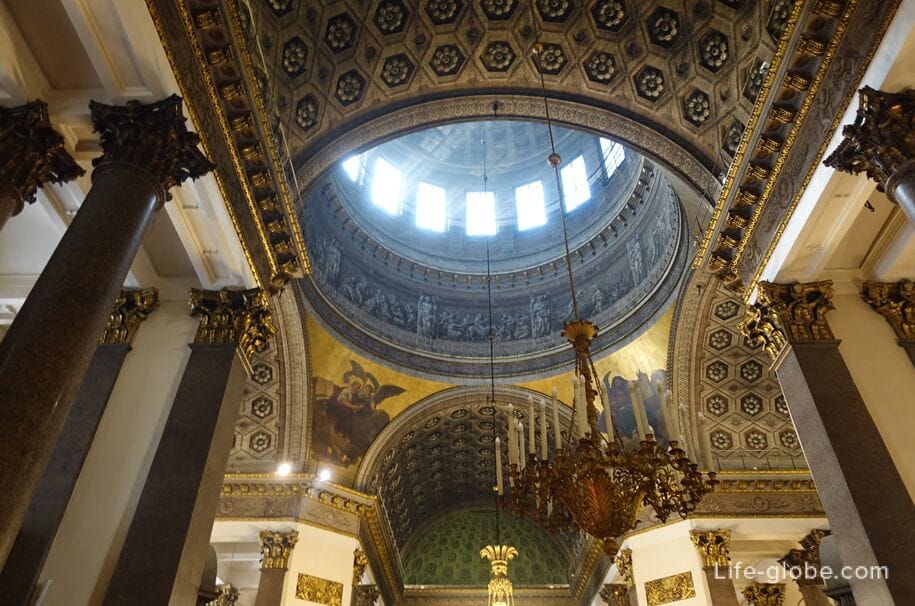

Chapel of Saints Anthony and Theodosius of Kiev-Pechersk.
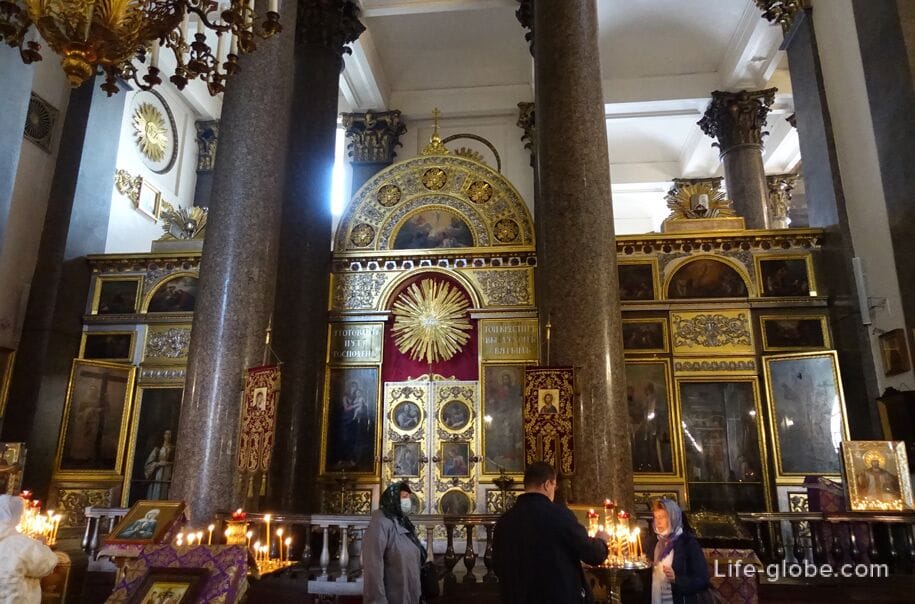
In the north-eastern part of the cathedral, opposite the chapel of Saints Anthony and Theodosius of Kiev-Pechersk, M. I. Kutuzov is buried.
A bronze fence designed by A. N. Voronikhin was erected over the grave. Above the memorial slab of red marble is an icon of the Smolensk Mother of God and the coat of arms of His Serene Highness the Prince of Smolensk.
On the wall above the grave is a picture by the artist Alekseev "The Miracle of the Kazan Icon of the Mother of God in Moscow". The painting depicts an event from the history of Russian military glory - the liberation of Moscow by the militia under the leadership of K. Minin and Prince D. Pozharsky in October 1612 with the Kazan icon of the Mother of God.
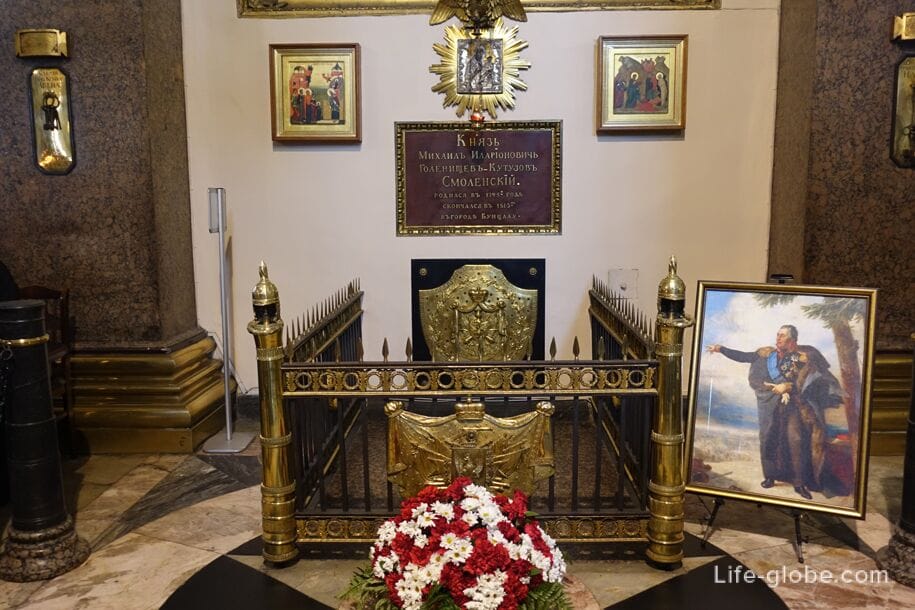
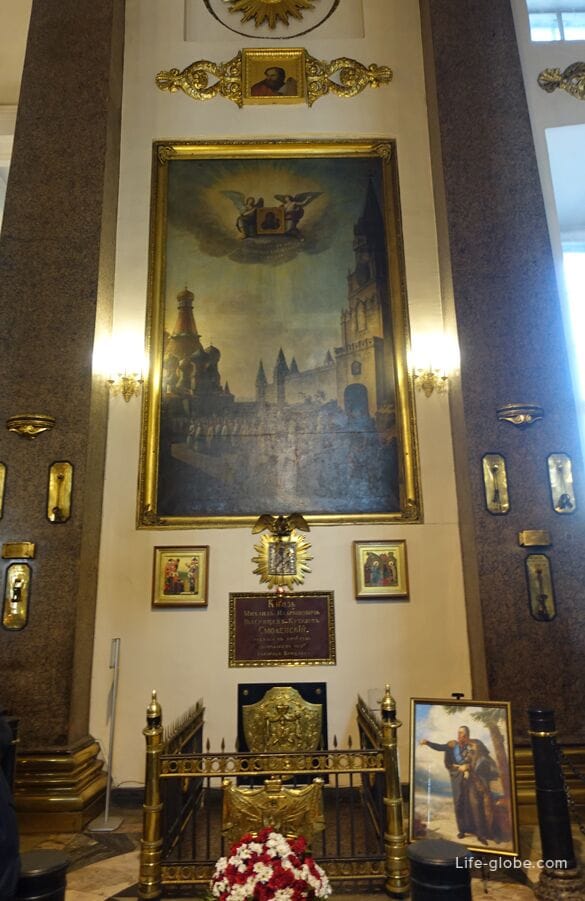
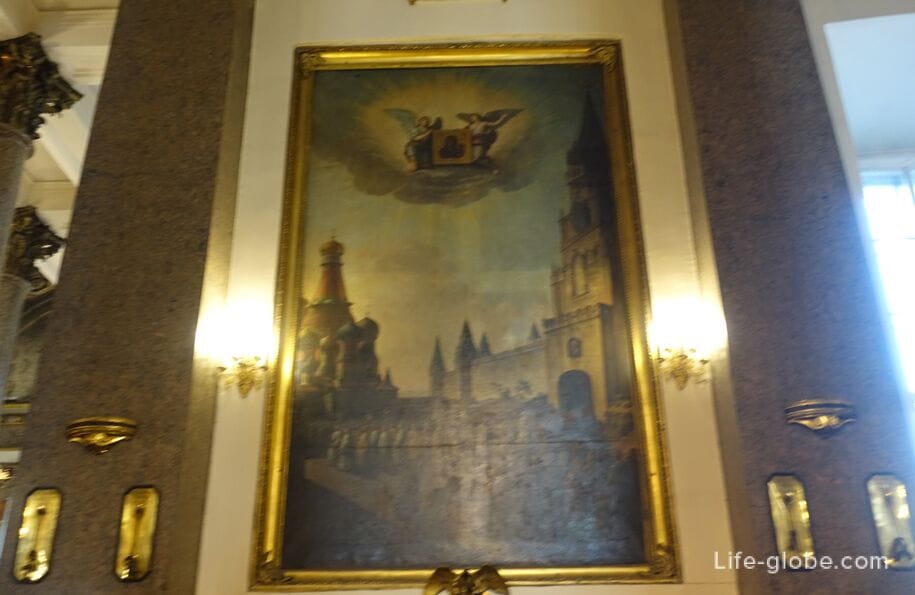
Russian Russian troops under the command of M. B. Barclay de Tolly successfully liberated Western Europe from Napoleon, and the keys to the French fortresses taken by the Russian troops began to arrive at the cathedral. 97 keys were placed on the walls of the cathedral. Most of the keys are now located in Moscow. 6 bundles are located over the grave of M. I. Kutuzov in the St. Petersburg Kazan Cathedral.

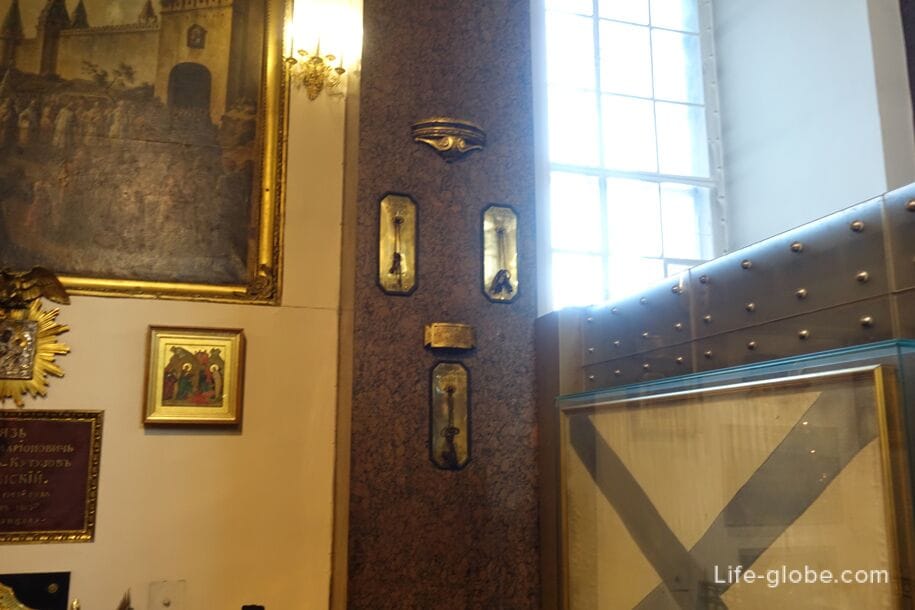
At the exit from the cathedral, on both sides of the north door, there are memorial plaques in honor of the emperors - the beginning (foundation) and the end of the construction of the cathedral: "With the permission of PAUL I-th started 1801" and "With the care of ALEXANDER I-th conchan 1811".

Kazan Cathedral Ensemble
The territory near the front (northern) facade of the Kazan Cathedral with a colonnade is an integral ensemble of the entire external appearance of the cathedral.
To the right and left of the colonnade of the Kazan Cathedral, framed by flowerbeds on high pedestals, there are monuments to Field Marshal Prince Kutuzov of Smolensk and Field Marshal Prince Barclay de Tolly.
The monuments were designed by the sculptor Orlovsky and installed in front of the cathedral in 1837.
During the Great Patriotic War, the monuments were disguised and the soldiers, passing by them, gave them military honors. Near the monuments, young officers swore an oath of loyalty to the Motherland.
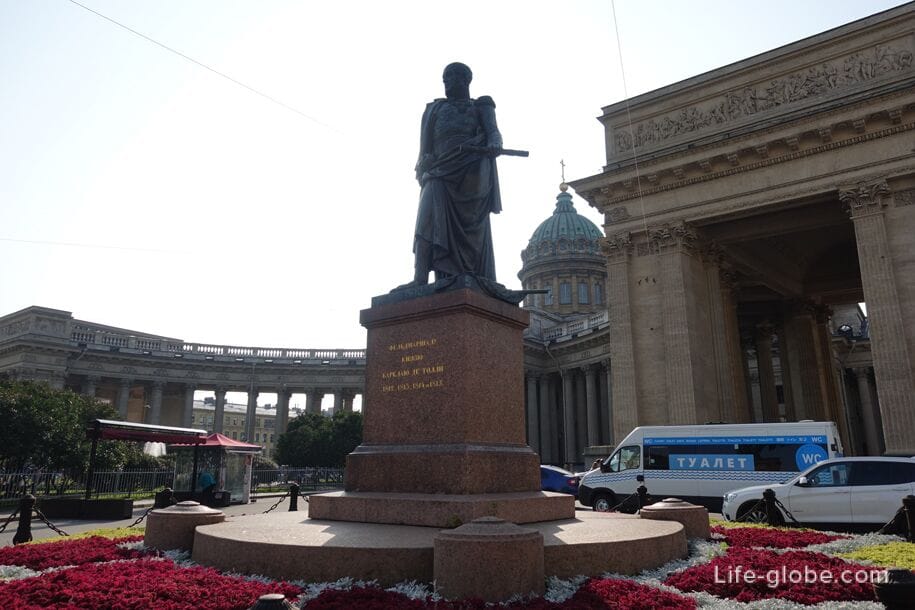

In front of the facade of the cathedral is a small square of the same name (Kazan Square) with a fountain and places to relax.
Behind the Kazan Square, across Nevsky Prospekt, stands an outstanding historical building - the Singer House, built in 1902-1904 by architect Pavel Suzor for the "Singer Joint-Stock Company in Russia".
View of the Kazan Square and the Singer House (right building with a dome)
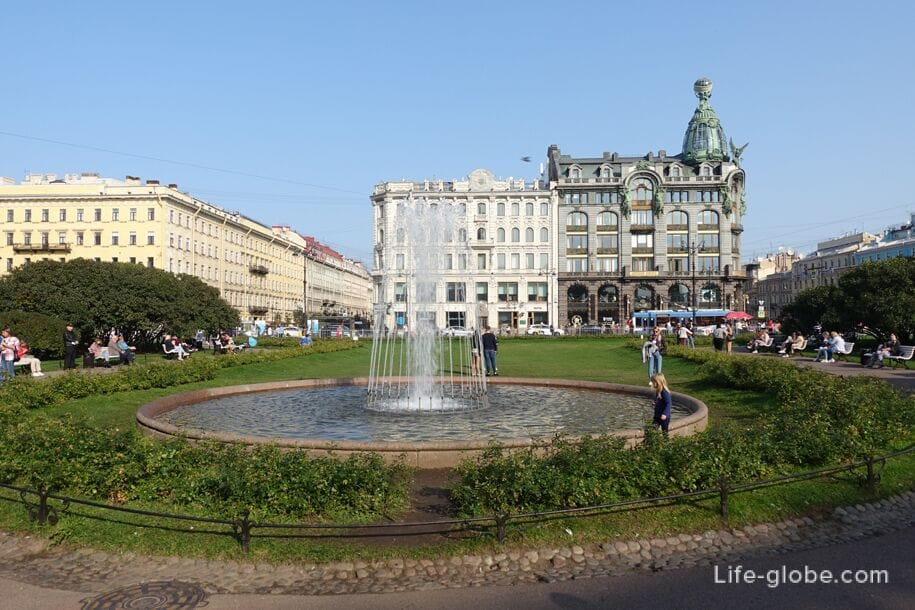
Today, the Singer house is the "House of the Book" with a cafe, and some of the premises are rented out. From the windows of the building you can enjoy a beautiful view of the Kazan Cathedral and Nevsky Prospekt. More about the Singer House…
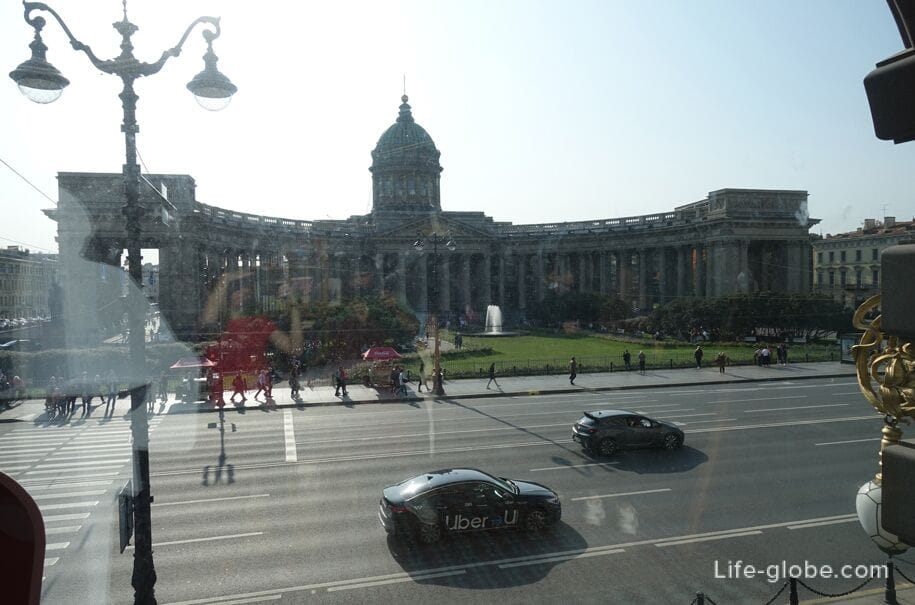
You can also visit the internal historical (now restored) premises of the Singer company building, climb the dome and go out to the roof, which offers panoramic views of the center of St. Petersburg.
You can visit the Singer house with a guided tour, which usually includes a visit to the building itself and access to the roof.
Practical information
The Kazan Cathedral offers sightseeing tours for organized groups and individual visitors. On the tour, visitors are told about:
- history of the cathedral and its interior decoration;
- the miraculous Kazan Icon of the Mother of God and other shrines;
- the great Russian commander M. I. Kutuzov and his tomb.
Services are held in the cathedral. Admission is free (free of charge).
You can visit the cathedral on your own or with one of the excursions in St. Petersburg
Address of the Kazan Cathedral: Nevsky Prospekt, 25x / Kazan Square, 2.
The nearest metrostations are Nevsky Prospekt and Gostiny Dvor.
Website of the Kazan Cathedral: kazansky-spb.
All accommodation facilities in St. Petersburg, including in the city center and on Nevsky Prospekt, can be viewed and booked here






